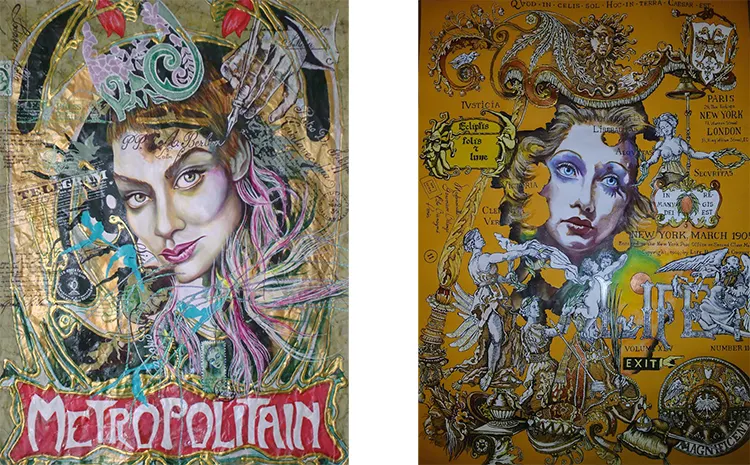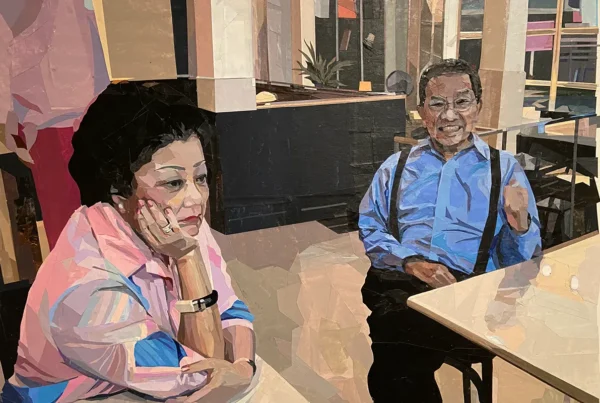“The self-taught person works on error: we try, we fail, we try again, we learn, we fail again and we try again.”
A Self-Taught Journey of Experimentation and Perseverance
Gabriela Farnell, a visual artist based in Buenos Aires, Argentina, has embraced art not as a choice but as an inevitable part of her existence. From an early age, she found joy in drawing, requesting paper and colored pencils as a child, and allowing her creativity to develop through play. Her artistic journey has been shaped by an unwavering commitment to experimentation, a process she likens to an ongoing game of trial and error. As a self-taught artist, she views mistakes not as failures but as essential steps toward progress, refining her craft through persistence and optimism. Each unsuccessful attempt is simply another opportunity to learn, making resilience a defining characteristic of her artistic evolution.
Her career path followed a gradual and organic trajectory, marked by determination and steady growth. At just fourteen, she started showcasing her drawings, despite recognizing their early imperfections. Entering exhibitions and competitions, she faced years of rejection but remained undeterred. As she matured, both personally and artistically, she began gaining recognition in her mid-twenties, passing pre-selections and occasionally seeing her work displayed. With time, she earned awards and accolades, validating her artistic journey. Rather than an overnight breakthrough, Farnell’s success was the result of persistent dedication, a natural progression that paralleled her own self-discovery.
For Farnell, creating art is an inseparable part of her identity. She does not view her artistic practice as a profession or a mere pursuit but rather as an essential expression of who she is. The act of drawing is not something she can simply choose to do or not do—it is as fundamental as breathing. Her artistic career has unfolded as a natural extension of her being, reinforcing her belief that art is her destiny. Through years of refining her skills and continuously pushing creative boundaries, she has developed a distinctive approach, one that reflects both her personal experiences and her deep connection to cultural narratives.
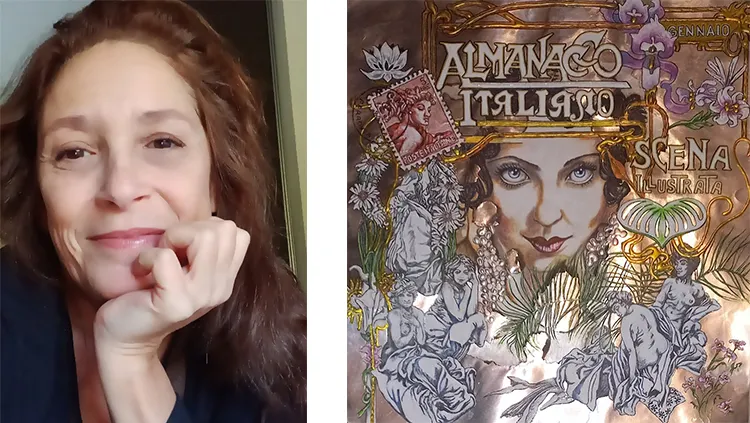
Gabriela Farnell: The Essence of Magical Realism and Cultural Identity
Farnell’s work is deeply rooted in the tradition of Latin American magical realism, where the boundaries between the tangible and the dreamlike blur seamlessly. Her compositions merge figurative elements with surreal undertones, crafting images that feel simultaneously familiar and otherworldly. This unique fusion of realism and fantasy is further enriched by her multicultural sensibilities, a reflection of Buenos Aires itself—a city shaped by diverse influences and cultural exchanges. For Farnell, the metropolis represents more than just a geographic location; it is an idea, a living embodiment of cultural confluence where different traditions coexist harmoniously.
She draws inspiration from the words of Jorge Luis Borges, who described Buenos Aires as a place that does not belong to any single tradition but rather embraces them all. This philosophy echoes throughout her work, where individual identity and cultural iconography intertwine. Her art does not adhere to a singular historical or regional aesthetic but instead aspires to a universal visual language. By integrating symbols, references, and artistic styles from various origins, she creates pieces that transcend specific narratives, inviting viewers to explore themes of shared human heritage.
Her artistic influences are equally diverse, shaped by great masters of drawing and painting across different periods. She admires the structural precision of Leonardo da Vinci, Velázquez, and Caravaggio, as well as the stylistic elegance of Mucha and Tamara de Lempicka. Surrealists like Dalí contribute to the dreamlike elements within her work, while the intricate compositions of Albrecht Dürer and Gustave Doré have left a lasting imprint on her technique. Among contemporary artists, Milo Manara stands out as a figure whose mastery of form and storytelling resonates deeply with her. Through this rich lineage of artistic influences, Farnell weaves her own distinct visual language, one that is both deeply personal and universally engaging.
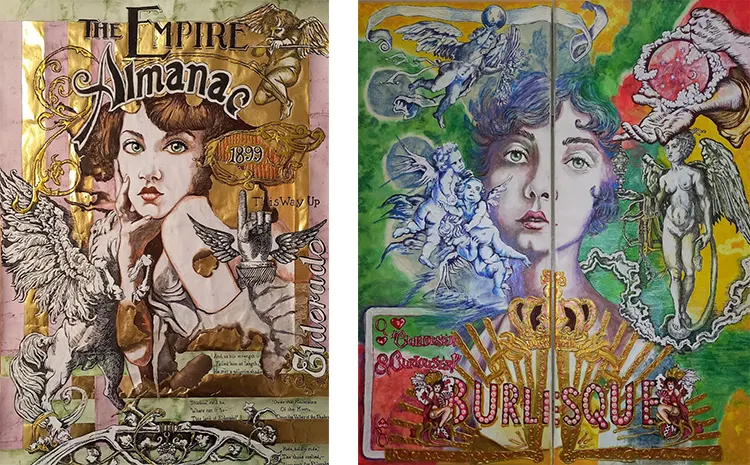
A Studio Without Walls: Process, Medium, and the Art of Distraction
Farnell’s creative process is as fluid as her artistic style, extending beyond the confines of a traditional studio. Over time, she has transformed her entire home into a workspace, ensuring that inspiration is never constrained by physical boundaries. The only essential requirement for her is good lighting—sometimes accompanied by music—to create an atmosphere conducive to artistic exploration. Unlike artists who seek solitude or rigid routines, she embraces the natural flow of creativity, allowing her process to unfold organically.
Rather than viewing distractions as obstacles, she integrates them into her work. When her focus shifts, she does not force herself back into a single project but instead redirects her energy into another. This approach allows her to work on multiple pieces simultaneously, ensuring that no moment of inspiration is wasted. By engaging with different works at once, she maintains a dynamic and evolving creative practice, where ideas continuously feed into one another. This adaptability reflects her broader philosophy of experimentation—letting the work dictate its own course rather than imposing rigid expectations upon it.
Her preferred medium, paper, plays a crucial role in this process. She values its versatility, durability, and the endless possibilities it offers for layering and transformation. From industrially manufactured sheets to delicate handmade varieties, every type of paper serves as a potential foundation for her compositions. The mixture of techniques she employs—graphite, ink, watercolor, acrylic, and even oil—is dictated by the specific demands of each piece. She does not begin a work with a predefined outcome but instead allows it to evolve naturally, responding to its needs as it takes shape. This spontaneous approach ensures that each artwork remains an open-ended exploration, shaped by intuition and discovery.
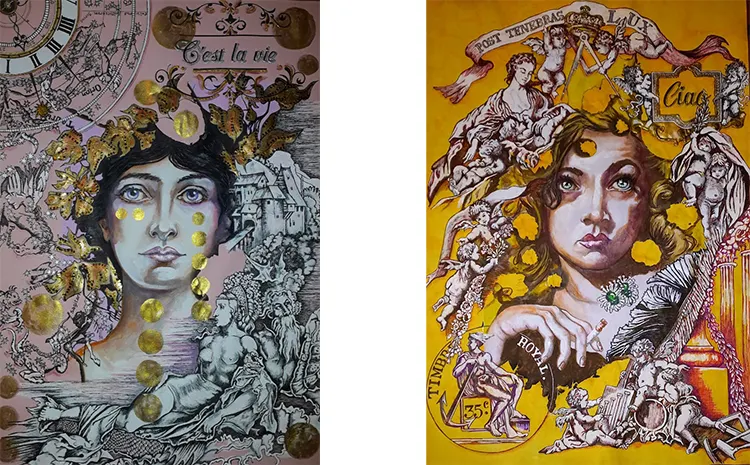
Gabriela Farnell: The Empire Almanac and the Art of Transformation
Among her many works, The Empire Almanac stands out as a particularly meaningful piece, embodying her philosophy of artistic metamorphosis. Part of her Calendar Girls series, this work pays homage to the aesthetics of 1930s film portraits while incorporating early 20th-century graphic elements and cultural icons. However, beneath its surface beauty lies a deeper exploration of transformation, resilience, and reinvention. At its core, The Empire Almanac challenges the idea that a portrait is merely a depiction of outward appearance—it is also a vessel for hidden narratives and layered histories.
The creative process behind this piece is as significant as the final result. Farnell begins with a meticulously drawn pencil portrait, only to subject it to fire—a deliberate act that introduces an element of chance and destruction. This burning process alters the very fabric of the work, leaving behind textured remnants that serve as the foundation for reconstruction. The scorched paper, infused with unpredictability, is then adhered to other materials, including metallic gold sheets, forming a new surface upon which additional artistic elements are layered. Through this interplay of destruction and creation, she infuses the work with a sense of renewal, echoing the broader themes of resilience and transformation that define her artistic approach.
Beyond its visual appeal, The Empire Almanac engages the viewer in a deeper exploration of storytelling through texture, symbolism, and layered meaning. Classic motifs such as calligraphic texts, celestial figures, and references to Edgar Allan Poe’s Eldorado are seamlessly woven into the composition, each contributing to its rich narrative. The work becomes an invitation—an opportunity for viewers to engage in their own process of discovery, finding personal significance within the details. Just as Farnell listens to each work to determine its needs, she encourages her audience to uncover their own interpretations, making every viewing experience a unique and intimate encounter.
